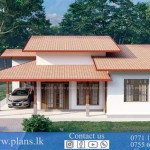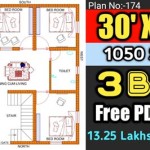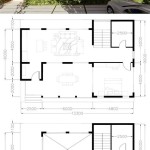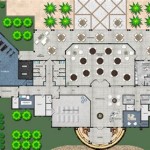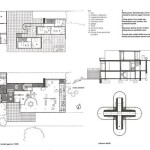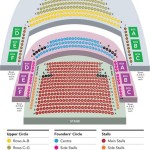Dual Occupancy Homes Plans in Sydney: A Comprehensive Guide
Dual occupancy homes in Sydney represent a growing trend in the residential property market, offering a versatile solution to address housing affordability, multi-generational living arrangements, and investment opportunities. These residences, typically consisting of two separate dwellings on a single lot, require careful planning and design to comply with local regulations and maximize their potential. This article provides a comprehensive overview of dual occupancy home plans in Sydney, covering key considerations, design principles, approval processes, and potential benefits.
The rise in popularity of dual occupancy developments can be attributed to several factors. Sydney's high property prices make it increasingly challenging for individuals and families to enter the housing market. Dual occupancy provides a more affordable alternative by allowing homeowners to share land costs. Additionally, the increasing prevalence of multi-generational households, where parents, children, and grandparents live together, necessitates housing solutions that offer both privacy and proximity. Finally, dual occupancy homes can serve as a valuable investment strategy, generating rental income from one dwelling while the owner occupies the other.
Understanding Dual Occupancy: Definitions and Types
Dual occupancy, as defined by most local councils in Sydney, refers to the development of two separate dwellings on a single Torrens title lot. These dwellings can be attached or detached, depending on the specific zoning regulations and site constraints. It is crucial to differentiate dual occupancy from other forms of higher-density housing, such as duplexes or multi-dwelling housing.
There are primarily two types of dual occupancy developments: attached and detached. Attached dual occupancy involves two dwellings that share a common wall, similar to a duplex. Detached dual occupancy, on the other hand, consists of two completely separate dwellings on the same lot. The choice between attached and detached depends on factors such as lot size, shape, zoning restrictions, and the desired level of privacy.
Another distinction lies in the ownership structure. In most cases, both dwellings are held under a single Torrens title, meaning they cannot be sold separately. However, some councils may allow for strata titling, which enables the individual sale of each dwelling. This option requires further subdivision and compliance with strata title legislation.
Key Considerations in Developing Dual Occupancy Homes
Before embarking on a dual occupancy project, several crucial factors must be carefully considered. These include zoning regulations, site analysis, design considerations, and budget constraints. Overlooking any of these aspects can lead to delays, increased costs, and potential rejection of the development application.
Zoning Regulations: The most important aspect is understanding the zoning regulations applicable to the property. Each local council in Sydney has specific rules regarding dual occupancy, including minimum lot size, frontage requirements, building height restrictions, and setback distances. These regulations are outlined in the council's Local Environmental Plan (LEP) and Development Control Plan (DCP). It is essential to consult these documents and seek professional advice to determine the feasibility of dual occupancy on the specific site.
Site Analysis: A thorough site analysis is crucial for identifying potential constraints and opportunities. This involves assessing the lot's dimensions, topography, orientation, existing vegetation, drainage patterns, and proximity to services and amenities. The site analysis will inform the design process and help determine the optimal placement and configuration of the dwellings. Factors such as soil conditions and existing easements also need to be carefully considered.
Design Considerations: The design of dual occupancy homes should prioritize functionality, privacy, and aesthetic appeal. The layout should ensure adequate separation between the dwellings, minimizing noise and visual intrusion. Considerations such as separate entrances, private outdoor spaces, and dedicated parking areas are essential. The design should also be sympathetic to the surrounding neighborhood, maintaining visual harmony and avoiding adverse impacts on neighboring properties. Passive solar design principles, such as optimizing orientation for sunlight and ventilation, can enhance energy efficiency and reduce operating costs.
Budget Constraints: Developing dual occupancy homes involves significant financial investment. It is crucial to establish a realistic budget that accounts for all expenses, including design fees, council application fees, construction costs, landscaping, and contingency funds. Obtaining multiple quotes from builders and suppliers can help ensure competitive pricing. It is also important to factor in ongoing costs such as property taxes, insurance, and maintenance.
The Development Approval Process
The development approval process for dual occupancy homes in Sydney can be complex and time-consuming. It typically involves several stages, including pre-lodgement consultation, development application submission, assessment, and approval. Understanding the process and engaging experienced professionals can significantly improve the chances of a successful outcome.
Pre-Lodgement Consultation: Before submitting a formal development application, it is advisable to have a pre-lodgement consultation with the local council. This allows applicants to discuss their proposal with council planners, obtain preliminary feedback, and identify any potential issues. Pre-lodgement consultation can save time and resources by addressing concerns early in the process.
Development Application Submission: The development application (DA) is the formal application to the local council seeking approval to carry out the proposed development. The DA must include detailed plans, elevations, sections, site analysis reports, and other supporting documentation. The level of detail required can vary depending on the complexity of the project and the council's requirements. Engaging a qualified architect or building designer is essential to ensure that the DA complies with all relevant regulations.
Assessment: Once the DA is submitted, the council will assess the proposal against the relevant planning controls and policies. This involves reviewing the plans, considering submissions from neighbors, and consulting with internal departments such as engineering and environmental health. The assessment process can take several weeks or months, depending on the complexity of the project and the council's workload.
Approval: If the council is satisfied that the DA complies with all relevant regulations, it will issue a development approval. The approval will typically include conditions that must be met during construction and ongoing operation of the development. These conditions may relate to building materials, landscaping, stormwater management, and noise control. It is essential to carefully review the conditions and ensure compliance throughout the project.
Design Principles for Optimizing Dual Occupancy Homes
Effective design is paramount to creating successful dual occupancy homes. The design should prioritize functionality, privacy, and aesthetic appeal, while also complying with all relevant regulations. The following design principles can help optimize the layout and functionality of dual occupancy homes.
Separation and Privacy: Maximizing separation and privacy between the dwellings is crucial for ensuring comfortable living. This can be achieved through careful placement of entrances, outdoor spaces, and windows. Orienting the dwellings to minimize overlooking and noise transmission is also important. Fences, landscaping, and strategically placed screening can further enhance privacy.
Optimizing Space and Functionality: The design should optimize the use of space to create functional and comfortable living areas. This may involve incorporating open-plan layouts, maximizing natural light, and providing ample storage. Considering the specific needs of the occupants is also important. For example, families with young children may require larger outdoor play areas, while elderly residents may benefit from accessible design features.
Energy Efficiency and Sustainability: Incorporating energy-efficient and sustainable design principles can significantly reduce operating costs and minimize environmental impact. This may involve using energy-efficient appliances, installing solar panels, harvesting rainwater, and using sustainable building materials. Passive solar design principles, such as orienting the dwellings to maximize sunlight in winter and minimize it in summer, can also contribute to energy efficiency.
Aesthetic Appeal and Streetscape Character: The design should be aesthetically pleasing and contribute positively to the streetscape character. This involves considering the architectural style, materials, and landscaping. The design should be sympathetic to the surrounding neighborhood, maintaining visual harmony and avoiding adverse impacts on neighboring properties. Careful attention to detail, such as the choice of exterior finishes and the design of landscaping, can significantly enhance the overall aesthetic appeal.
Potential Benefits of Dual Occupancy Homes
Dual occupancy homes offer a range of potential benefits for homeowners, investors, and the community as a whole. These benefits include increased housing affordability, multi-generational living options, rental income potential, and efficient use of land resources.
Increased Housing Affordability: Dual occupancy provides a more affordable housing option by allowing homeowners to share land costs. This can make homeownership more accessible for first-time buyers, young families, and those on lower incomes. It also allows existing homeowners to unlock the value of their land by developing a second dwelling and generating rental income.
Multi-Generational Living: Dual occupancy provides a practical solution for multi-generational families who wish to live together while maintaining a degree of independence and privacy. This allows parents, children, and grandparents to share resources and provide mutual support, while also enjoying their own separate living spaces.
Rental Income Potential: One of the primary benefits of dual occupancy is the potential to generate rental income from one of the dwellings. This can help offset mortgage repayments, provide a passive income stream, and increase the overall value of the property. The demand for rental properties in Sydney is consistently high, making dual occupancy a potentially lucrative investment strategy.
Efficient Use of Land Resources: Dual occupancy promotes the efficient use of land resources by increasing housing density without significantly altering the character of established residential areas. This can help address housing shortages and reduce urban sprawl, while also minimizing the environmental impact of new development.

Dual Occupancy Home Designs G J Gardner Homes

Dual Occupancy Builders Homes Meridian

Dual Occupancy Builders Homes Meridian
Dual Living House Plans Top 7 Floor Designs For Occupancy Homes Architecture Design

Bragado Dual Living 6 Bedroom Home Design Mcdonald Jones Homes
Dual Living House Plans Top 7 Floor Designs For Occupancy Homes Architecture Design

Solante Range Single Y Designs With A Focus On Dual Living

Dual Living Home Design House Plan By Wisdom Homes
Dual Living House Plans Top 7 Floor Designs For Occupancy Homes Architecture Design

Design Catalogue Silkwood Homes

